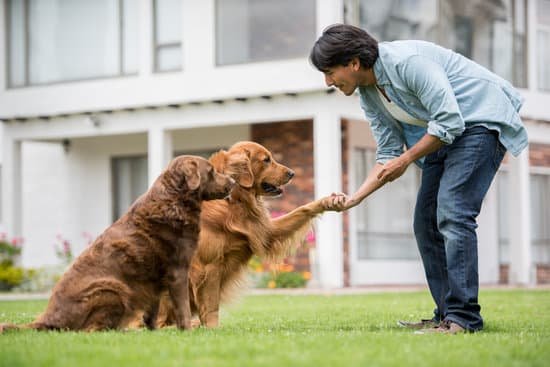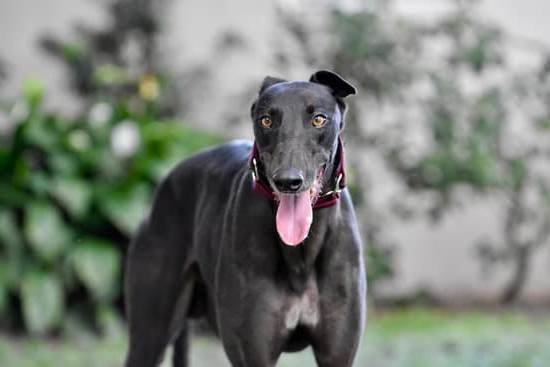Training your dog to sit and stay is a fundamental aspect of obedience training that every dog owner should prioritize. These commands play a crucial role in ensuring your dog’s safety and overall well-being. In this article, we will explore the significance of teaching your dog how to sit and stay, as well as the benefits of having a well-trained dog that can follow these commands on command.
When your dog learns to sit and stay on command, it enables you to have better control over their behavior in various situations. Whether you’re at home, out for a walk, or encountering new people or animals, these commands allow you to keep your dog calm and composed. This not only prevents them from engaging in unwanted behaviors but also ensures their safety by keeping them away from potentially dangerous situations.
Additionally, having a well-trained dog that can sit and stay on command improves the bond between you and your furry companion. It establishes clear communication between you both and helps build mutual trust and respect. Furthermore, it makes everyday activities such as mealtime, grooming sessions, or vet visits more manageable and less stressful for both you and your pet.
In the next sections of this article, we will delve deeper into the basic concepts behind the sit and stay commands. We will discuss how these two commands complement each other while also emphasizing the importance of consistency and positive reinforcement in training. By understanding these foundational principles, you’ll be better equipped to successfully train your dog to sit and stay on command.
Understanding the Basic Concepts
The sit and stay commands are two fundamental commands that every dog owner should teach their furry friend. These commands not only contribute to a well-behaved and disciplined dog, but they are also essential for their safety and well-being. In this section, we will explore the difference between the sit and stay commands and how they complement each other. We will also delve into the significance of consistency and positive reinforcement in training.
Sit Command:
The sit command is one of the first basic commands that you should teach your dog. It involves having your dog assume a seated position on command. The sit command is useful in various situations, such as when you need your dog to remain still or calm down before receiving food or treats, entering or exiting a door, or interacting with other people or animals.
Stay Command:
Unlike the sit command, which focuses on the posture of your dog, the stay command requires them to maintain their position until given further instruction. It emphasizes impulse control and self-discipline. The stay command is particularly vital in situations where your dog’s immediate movement could pose a risk or disturbance, such as crossing roads, encountering strangers or unfriendly dogs, or during grooming sessions.
Consistency and Positive Reinforcement:
Consistency is key when training your dog to obey both the sit and stay commands. Dogs thrive on routine and repetition, so it is crucial to use consistent cues and gestures each time you want them to perform these commands. Additionally, positive reinforcement plays a significant role in effective training. Rewarding your dog with treats, praise, or playtime when they correctly follow the sit and stay commands encourages them to repeat those behaviors in anticipation of rewards.
By understanding the concepts behind both the sit and stay commands, as well as the importance of consistency and positive reinforcement, you can lay a solid foundation for successful training sessions with your dog. Remember that patience and persistence are key elements to achieve obedience in these commands, so be sure to give your dog plenty of time and practice to master them.
Preparing for Training Sessions
Before you embark on training your dog to sit and stay, it is important to gather the necessary supplies for a successful training session. Here are the items you’ll need:
- Treats: Choose small, bite-sized treats that your dog finds irresistible. These treats will serve as positive reinforcement during the training process.
- Leash and collar: These are essential for controlling your dog’s movements during the training session, especially when teaching them to stay in place.
- Clicker (optional): A clicker can be a useful tool for marking desired behaviors and communicating with your dog during training.
Once you have gathered all the supplies, it is crucial to create a calm and distraction-free environment for your training sessions. Here are some tips to maximize learning:
- Find a quiet space: Choose a location in your home or yard where there are minimal distractions or noises that could divert your dog’s attention.
- Remove potential distractions: Clear the area of toys, food bowls, or anything else that might distract your dog from focusing on the training commands.
- Set aside dedicated time: Make sure you have enough time set aside for each training session, ensuring that you won’t feel rushed or interrupted.
Remember, creating a positive learning environment and being well-prepared will set both you and your dog up for success during the training process.
Step-by-Step Guide
Teaching your dog to sit is a fundamental command that provides the foundation for many other behaviors and obedience training. A dog that can sit on command is easier to control, less likely to engage in unwanted behaviors, and is generally considered well-behaved. Follow this step-by-step guide to teach your dog how to sit:
Step 1: Prepare for Training
Before you begin training your dog to sit, gather some treats or small pieces of food as rewards. Choose a treat that your dog finds highly motivating and tasty. It will be used as positive reinforcement during the training process.
Step 2: Start with Basic Position
Begin by standing in front of your dog in a quiet and distraction-free environment. Show them the treat and hold it close to their nose, then slowly move the treat above their head. As their nose follows the treat upward, their backside naturally lowers into a sitting position. As soon as they sit down, say “sit” and immediately give them the treat while praising them with verbal cues like “good boy” or “good girl”.
Step 3: Reinforce Consistently
Repeat this process several times, ensuring that you use the word “sit” each time your dog assumes the sitting position. With consistent practice and repetition, your dog will begin associating the word with the action of sitting down.
Step 4: Add a Hand Signal
Once your dog consistently responds to the verbal cue of “sit,” you can introduce a hand signal alongside it. This hand signal can be simply raising an open palm in front of their face whenever you say “sit.” Use both the verbal cue and hand signal simultaneously until your dog begins responding reliably to just the hand signal.
Step 5: Practice in Various Environments
Now that your dog has learned how to sit indoors, gradually introduce different environments into their training sessions. Start by practicing in slightly more distracting areas within your home before progressing to outdoor locations with more stimuli. This will help your dog generalize the “sit” command and respond regardless of the surroundings.
Remember, consistency is key when teaching your dog to sit. Practice for short periods multiple times a day and gradually increase the duration of each training session as your dog’s understanding improves. Additionally, be patient and positive throughout the process, rewarding your dog with treats and praise for their efforts and progress. Soon enough, your furry friend will be sitting on command like a pro.
Step-by-Step Guide
Teaching your dog to stay is an essential command that can help keep them safe and in control in various situations. Whether you want them to remain still while you open the door or wait patiently at a distance, the stay command is crucial for their well-being. In this step-by-step guide, we will walk you through the process of teaching your dog to stay.
- Start with a reliable sit command: Before introducing the stay command, it’s important to ensure that your dog has a solid understanding of the sit command. Begin by asking your dog to sit and rewarding them with praise and a treat when they comply. Make sure they can hold the sitting position for several seconds before moving on to the next step.
- Introduce the hand signal for stay: Once your dog is comfortable with sitting, add a hand signal to indicate the stay command. You can use an open palm facing towards your dog as the visual cue for staying put. As you show this signal, say “stay” in a clear and firm tone.
- Take small steps back: With your dog in a sitting position, take one small step backward while maintaining eye contact and using the hand signal for stay. If your dog remains calm and doesn’t move, immediately reward them with praise and a treat. Repeat this step several times, gradually increasing the distance as your dog becomes more comfortable.
- Add duration: After practicing stepping back, focus on extending the duration of the stay command. Ask your dog to sit and give them the hand signal while saying “stay.” Start by waiting for just a few seconds before rewarding them for their obedience. Gradually increase the time they must remain seated before receiving reinforcement.
- Vary distance and distractions: As your dog becomes more proficient at staying put, introduce different distances and distractions during training sessions. Start by adding mild distractions such as toys or low-level noise distractions while reinforcing their ability to ignore these distractions and maintain the stay command. Increase the difficulty over time by practicing in more distracting environments.
Remember, consistency and positive reinforcement are key throughout the training process. Celebrate your dog’s successes with praise, treats, and plenty of affection. If your dog struggles at any point, go back to a previous step and reinforce their understanding before moving forward. With patience and practice, your dog will become skilled at staying on command, ensuring their safety in a variety of situations.
Troubleshooting Common Challenges
During the process of training your dog to sit and stay, you may encounter various challenges that can hinder progress. It is important to understand these common difficulties and have effective strategies in place to overcome them. By addressing these challenges head-on, you can reinforce the sit and stay commands effectively.
One common challenge that dog owners may face is a lack of focus or attention from their dog. Some dogs may struggle to maintain concentration during training sessions, making it difficult to teach them the sit and stay commands. In such cases, it is essential to start with short training sessions and gradually increase the duration over time. Make sure to choose a quiet and calm environment without any distractions that might divert your dog’s attention.
Another challenge that may arise is disobedience or reluctance from your dog to obey the sit and stay commands. This could be due to various reasons, such as fear or anxiety. It is crucial to create a positive training atmosphere by using rewards and praise as motivators. Consistency is key here; make sure you are consistent in your commands and expectations so that your dog understands what is expected of them.
Some dogs may also exhibit signs of restlessness or impatience during training sessions, making it difficult for them to learn and perform the sit and stay commands successfully. If this happens, try breaking down the training into smaller steps or incorporating interactive activities into the sessions, such as playing fetch before returning to practicing obedience commands.
Lastly, some dogs might show resistance or defiance when asked to stay in one place for an extended period. This can be addressed by gradually increasing the duration of the stay command over time. Start with just a few seconds and work your way up, rewarding your dog each time they successfully complete the command without moving.
Remember that every dog will have their own unique set of challenges during training, so it’s important to be patient and understanding throughout the process. By troubleshooting common challenges and employing effective techniques, you can successfully reinforce the sit and stay commands with your beloved furry friend.
Building Distraction Skills
Adding Gradual Distractions
Once your dog has mastered the sit and stay commands in a controlled environment, it is essential to build their distraction skills. This means teaching them to obey these commands even when there are tempting distractions around them. Adding distractions will help your dog generalize their understanding of the sit and stay commands and ensure obedience in various environments.
Start by introducing mild distractions that your dog is likely to encounter on a daily basis, such as toys or treats. Place these distractions within sight but just out of reach of your dog. Give the sit command and reward them with praise and a treat when they successfully hold the position. If they break the sit or try to get the distraction, calmly redirect them back into position without scolding or punishing them.
Strengthening Focus
To strengthen your dog’s ability to focus during distractions, gradually increase the level of difficulty. Introduce more exciting distractions or ones that move, such as a bouncing ball or another playful dog walking by at a distance. Start small and gradually decrease the distance between your dog and the distraction as they become more reliable in maintaining their sit.
During this training phase, it is crucial to reinforce positive behaviors consistently. Praise and reward your dog every time they successfully resist the temptation and maintain their sit or stay position despite distractions around them. This positive reinforcement will motivate them to continue following your commands even in distracting situations.
Training in Real-Life Scenarios
Finally, it is essential to practice the sit and stay commands in real-life scenarios where distractions are inevitable. Take your dog for walks in different environments like parks, busy streets, or outdoor cafes where there may be other people, animals, or interesting smells that can distract them.
When practicing in these real-life scenarios, remember to keep safety as a top priority. Use a leash if needed and gradually increase the level of exposure to distractions as your dog becomes more comfortable and reliable with the commands. With consistent practice, your dog will learn to listen to your sit and stay commands regardless of the distractions present, ensuring their safety and well-being in any situation.
Generalizing Sit and Stay Commands
Once your dog has developed a solid understanding of the sit and stay commands in the training environment, it is essential to generalize these skills to different locations and situations. The ultimate goal is for your dog to respond obediently to sit and stay commands, regardless of the surroundings or distractions present. This section will provide strategies and techniques to help you achieve this level of obedience in your furry companion.
Start with Familiar Environments
When generalizing the sit and stay commands, it is best to begin in settings that your dog is familiar with, such as your backyard or a quiet park where you usually train. This familiarity will help build confidence and increase the chances of success. Gradually introduce distractions in these familiar environments, such as toys or other pets nearby, to test your dog’s ability to maintain focus on the commands.
Train in Different Locations
After practicing sit and stay commands successfully in familiar environments, it’s time to expand training into new locations. Start by choosing relatively low-distraction places like a friend’s house or a quieter area of a local park. As your dog becomes more comfortable with following commands outside their comfort zone, gradually move on to environments with higher levels of distractions, such as busy streets or crowded parks.
Practice Sit and Stay During Everyday Activities
To reinforce your dog’s understanding of sit and stay commands within daily routines, integrate them into various activities. For instance, have your dog sit and stay before opening the door for walks or meals. Incorporate the commands during grooming sessions or when guests arrive at your home. By incorporating these cues into everyday life situations, you help solidify their meaning and importance for your dog.
Maintain Consistency
Consistency is key when generalizing sit and stay commands. Ensure that everyone in your household uses the same verbal cues, hand signals, and expectations for these commands. Consistent reinforcement and positive feedback will help reinforce the desired behavior from your dog across different environments. Additionally, regularly reviewing and refreshing training sessions will keep these commands fresh in your dog’s mind.
Provide Positive Reinforcement
As you progress with generalizing the sit and stay commands, continue to reward your dog for their obedience and success. Offering treats, praise or playtime as rewards will motivate your dog to continue following the commands even in challenging situations. Positive reinforcement serves as a reminder that good behavior is always rewarded, encouraging your dog to maintain their focus and obedience.
By generalizing sit and stay commands in various locations and contexts, you are ensuring that your dog understands the importance of listening to these commands regardless of their surroundings or distractions. With consistency, patience, and ongoing practice, you can have a well-trained companion who reliably responds to sit and stay cues wherever you may be.
Advanced Training Techniques
In order to enhance your dog’s understanding and response to the sit and stay commands, it may be beneficial to introduce advanced training techniques. These techniques can help reinforce the desired behaviors and improve your dog’s overall obedience. Two effective methods to consider are hand signals and vocal cues.
Hand signals can be a valuable tool in dog training as they offer a visual cue that is easily understood by dogs. It is important to establish clear and consistent hand signals for the sit and stay commands. For example, for the sit command, you may use an open palm facing upward while lowering it towards the ground. Similarly, for the stay command, you might use a stop sign gesture with your hand extended towards your dog.
Vocal cues or verbal commands can also play a significant role in advanced training techniques. By associating specific words or phrases with the sit and stay commands, you can further solidify your dog’s understanding of these behaviors. Consistency is key here as using different words or phrases may confuse your dog. For instance, you could use “sit” for the sit command and “stay” for the stay command consistently during training sessions.
Combining both hand signals and vocal cues can provide a more comprehensive approach to advanced training techniques. This way, you provide multiple forms of communication that reinforce each other. It is important to remember that dogs rely on consistency and repetition in their learning process, so be patient and stick to the same signals and commands throughout training.
| Advanced Training Techniques |
|---|
| Hand Signals |
| Vocal Cues |
Conclusion
In conclusion, training your dog to sit and stay is essential for their safety and well-being. These commands provide a foundation for obedience and control, allowing you to keep your dog out of danger and prevent them from engaging in unwanted behaviors. Furthermore, having a well-trained dog that can sit and stay on command brings numerous benefits to both you and your furry companion.
To successfully teach your dog these commands, it’s crucial to understand the basic concepts of sit and stay. While they are separate commands, they complement each other by contributing to overall obedience. Consistency and positive reinforcement are key in training, as they help reinforce desired behaviors in your dog.
Before diving into training sessions, it’s important to gather the necessary supplies and create a calm environment that minimizes distractions. This allows your dog to focus on learning the commands without any unnecessary interruptions or disruptions. Additionally, breaking down the training process into simple steps ensures better understanding and success for your dog.
Throughout the training process, it’s important to address common challenges that may arise. Troubleshooting common difficulties empowers you as a dog owner to overcome obstacles effectively while reinforcing the sit and stay commands. Gradually introducing distractions into the training sessions helps build distraction skills in your dog so they can maintain obedience even in different environments.
As you progress with training, it’s vital to generalize the sit and stay commands beyond typical training settings. Practicing these commands in different locations and situations reinforces obedience and ensures that your dog understands that they should respond regardless of the circumstances.
Finally, ongoing practice and rewards are crucial for maintaining the sit and stay commands. Celebration of your dog’s progress along with consistent positive reinforcement encourages them to continue obeying these cues readily.
By following these guidelines for teaching your canine companion how to sit and stay, you create a strong foundation of obedience that will benefit both you and your four-legged friend throughout their life together.
Frequently Asked Questions
Why won’t my dog sit and stay?
There can be several reasons why your dog is not sitting and staying. It could be due to a lack of proper training or inconsistency in the training method you are using. Dogs thrive on consistency, so if the training sessions are sporadic or if the commands are not reinforced consistently, your dog may struggle to understand what is expected of them. Another possibility is that your dog may have a short attention span or is easily distracted by their surroundings.
In such cases, it might be helpful to train in a quiet and familiar environment without any distractions. Additionally, some dogs may simply have a higher energy level or be more naturally independent, making it challenging for them to remain still for an extended period. Patience, positive reinforcement, and finding suitable rewards that motivate your dog can contribute to improving their ability to sit and stay.
Why does my dog always move to where I was sitting?
Dogs often move to where you were sitting because they associate your presence with comfort and security. Your dog views you as their pack leader and being close to you provides them with a sense of safety and familiarity. Dogs also have an instinctual desire to be near their owners as they naturally seek companionship.
When you get up from where you were sitting, your dog might feel compelled to follow you closely because they don’t want to miss out on any potential interaction or activity that may occur next. Remember that this behavior is rooted in their natural instincts and can be seen as a sign of loyalty and affection towards you.
Why does my dog lazy sit?
Dog lazy sitting refers to when a dog sits down but doesn’t fully engage its muscles, resulting in a slouching posture or not maintaining an upright position like they usually would while sitting alertly. This behavior can occur due to various factors such as fatigue after exercise or being content and relaxed in their current environment. If your dog feels safe, comfortable, or relaxed enough, they might choose the lazy sit posture as it requires less effort than maintaining an attentive sitting position.
It’s important to evaluate your dog’s overall health and energy levels to determine if the lazy sitting is a cause for concern or simply a harmless behavior. If it becomes excessive or occurs alongside other signs of discomfort, it may be beneficial to consult with a veterinarian to rule out any underlying medical issues.

Welcome to the blog! I am a professional dog trainer and have been working with dogs for many years. In this blog, I will be discussing various topics related to dog training, including tips, tricks, and advice. I hope you find this information helpful and informative. Thanks for reading!





